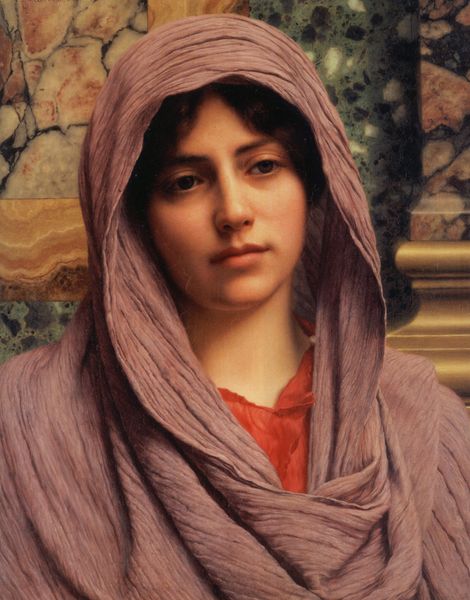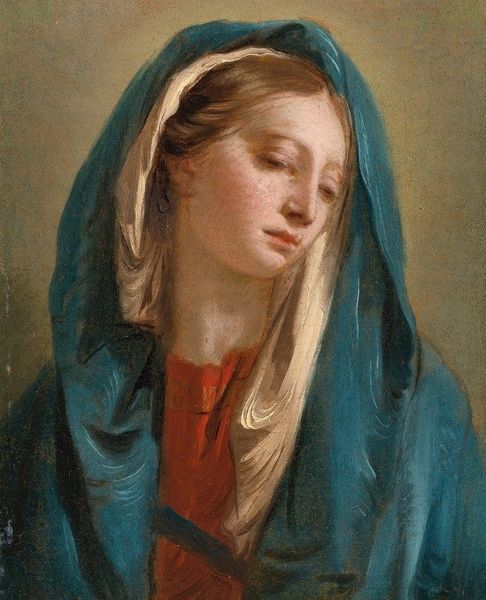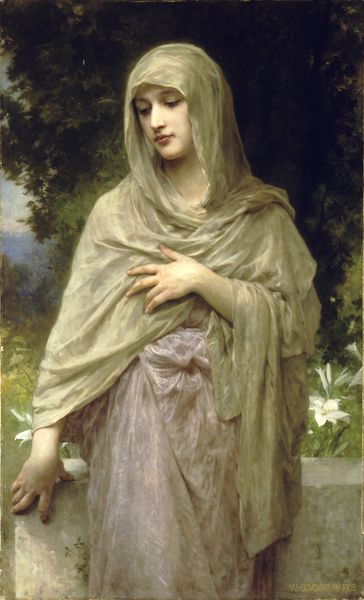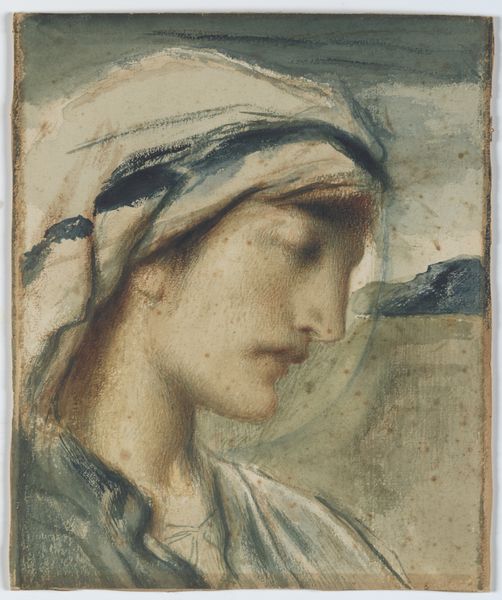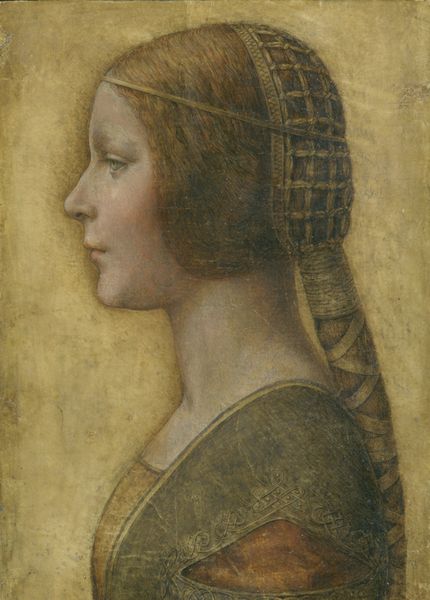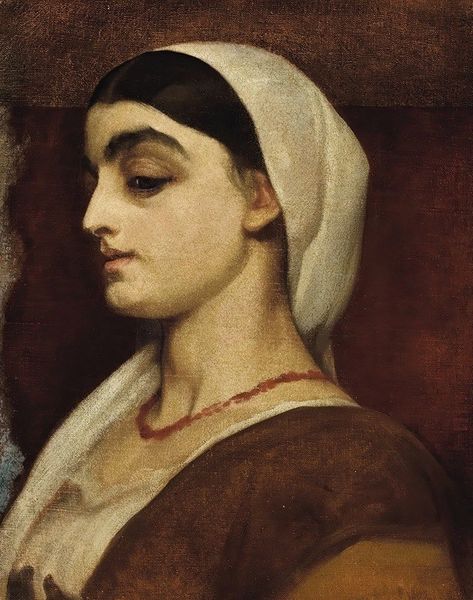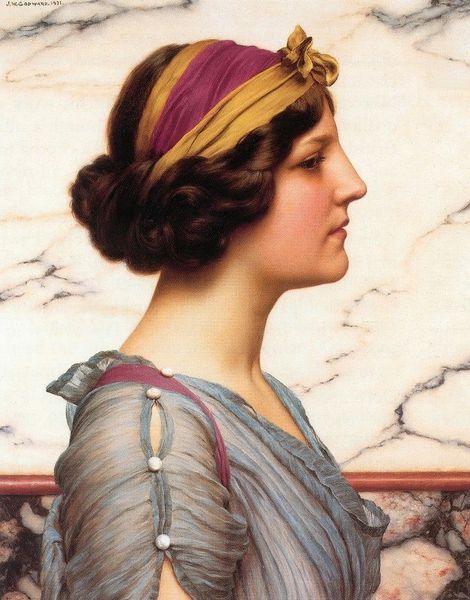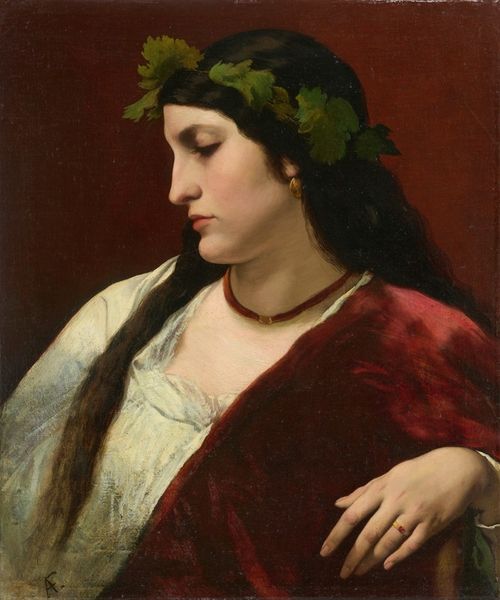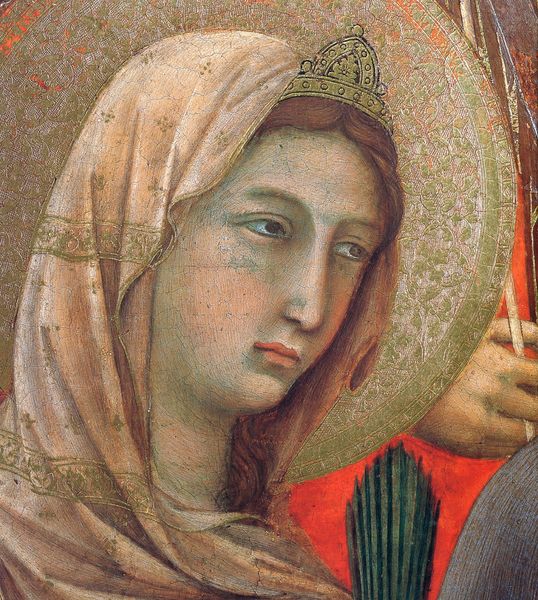
Copyright: Public Domain: Artvee
Editor: This is "Cytheris" by John William Godward, painted in 1922, using oil paints. I’m struck by how meticulously Godward renders the fabric. It looks almost photographic! What's your take on this work? Curator: The intense focus on replicating textures is key. Consider the context: By 1922, photography had been around for decades, challenging painting's role in representing reality. Godward’s hyper-realism, the almost obsessive depiction of fabrics, serves as both a testament to and a critique of the value of handcraftsmanship in the age of mechanical reproduction. Editor: So, it's not just about beauty, it's about labor and the changing artistic landscape? Curator: Precisely! He's showing off the artist’s skill while quietly questioning what art means when machines can do something similar. Think about the economics of art production; how much time did it take to produce that result versus making a photo? What kind of training did each activity require? He’s inviting a conversation about skill and market value. Notice how the classical motifs are rendered in mass producible media... Does that dilute its 'prestige'? Editor: That makes me see the image in a totally different light! I was so focused on the woman herself. Curator: The 'woman' is more of a mannequin upon which fabric and technique can be displayed. Does rendering a woman with minimal character contribute or detract to our interpretation of this painting in the context of shifting views on beauty and feminine worth? Is this more about artistic demonstration? Editor: I hadn’t thought about the 'performance' aspect. The level of craftsmanship and also the subtle commentary are pretty brilliant! Curator: Agreed. This highlights the tension inherent in late Academic art, and its complicated relationship to both tradition and modernity. It has made me reflect on my own artistic production in relation to technology.
Comments
No comments
Be the first to comment and join the conversation on the ultimate creative platform.
